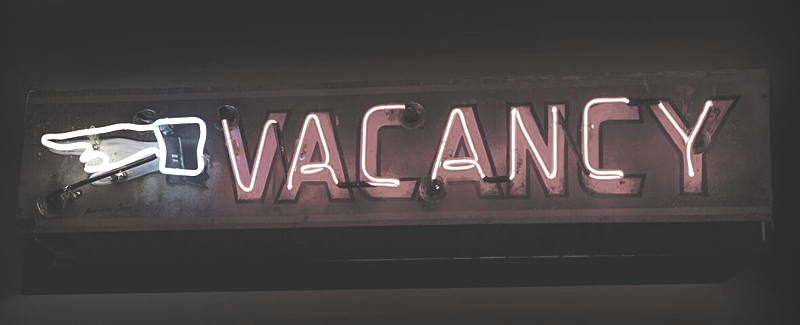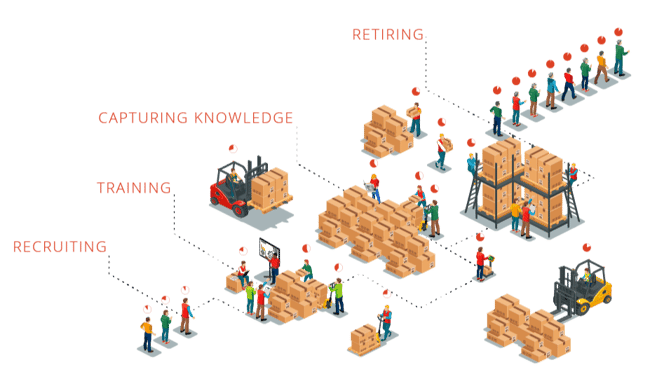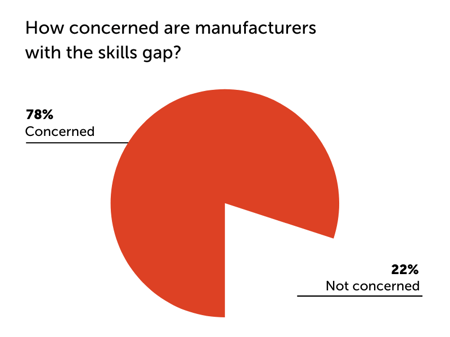
Training
4 min read
Breaking Down the Skills Gap: Recruiting & Retirement

For those in the manufacturing and industrial sector, what’s commonly known as the skills gap is a well-documented issue. As a growing number of Americans retire, they take their decades of experience with them, resulting in a noticeable skills shortage.
The problem is poised to hit businesses hardest in the next few years, with over a quarter of the domestic manufacturing workforce being over the age of 55.
The Skills Gap Continues to Widen
The manufacturing industry is already beginning to feel impact of the skills gap.
“The retirement onslaught as we predicted is actually happening,” said Patrick Flaherty, an economist at the state Department of Labor. “We’ve been talking about this for quite a number of years. You don’t have to be a genius. Just look at the age profile.”
This trend is showing no signs of slowing down. As each individual retires, they take their tribal knowledge with them, making it even harder to maintain production levels as new employees are trained up.
Pair this with the industry struggling to even attract job applicants from younger generations and it becomes an unavoidable issue - requiring a wide range of tactics to solve.
Outdated Public Perception
The idea that domestic manufacturing is a shrinking industry is flat out false. The U.S. had as many people working in the manufacturing sector in December 2018 as it did 69 years ago in 1950, experiencing it’s best jobs growth in the last 30 years. So why aren’t younger people interested in these open positions? We can boil it down to a matter of public perception.
In a recent study, millennials (born 1981-1996) rank manufacturing as their least preferred career destination. This should not come as a surprise. Stigma about the manufacturing workplace as a dirty, dark, and dangerous profession is well understood. News reports often focus on waves of manufacturing layoffs and increasing automation. Taken together, it’s no wonder young people aren’t attracted to jobs that appears to be both grimy and unstable.
Millennials rank manufacturing as their least preferred career destination.
But domestic manufacturing is having a major comeback. The industry looks a lot different these days, modern facilities are typically clean and safe, full of advanced technologies, not greasy assembly lines—unfortunately that perception has yet to translate to career interest for young people.
Time for Manufacturing Companies to Adapt
It's time the industry adapts to remain competitive. To attract a younger workforce, companies can re-evaluate their job postings, open up their doors to show what a modern factory looks like, emphasize the advanced technologies in use, and much more.
At Dozuki, we’ve worked with hundreds of companies who are facing these same challenges of retirements and recruiting. We’ve compiled the best, most tactical advice and strategies in our new e-book to help manufacturers of all sizes, take a look.
Recruiting workers to backfill retirements is just one part of addressing the skills gap. Once you get new employees in the door, you have to train them efficiently in order to up-skill quickly and see results. All this, of course, hinges on capturing the tribal knowledge of retiring workers that kicked off this entire challenge to begin with.
Topic(s):
Training
Related Posts
View All PostsEffective Ways To Reduce Employee Training Costs In Manufacturing
29 min read
If you have a business that includes the use of employees, one of the first and most important tasks you must fund is training. This is true of all industries, but companies...
Continue Reading
Standard Work
How To Reduce Defects in Manufacturing in 2022
25 min read
Product defects are a pain at any manufacturing company. When all the time, energy, and money that is spent to produce a product is wasted due to defects in the final...
Continue Reading
Training
Best Practices On How To Retain Factory Workers
30 min read
Manufacturing companies rely on workers to be the frontline of production. And while companies across all sectors struggle to recover from a labor crisis perpetuated in part...
Continue Reading





